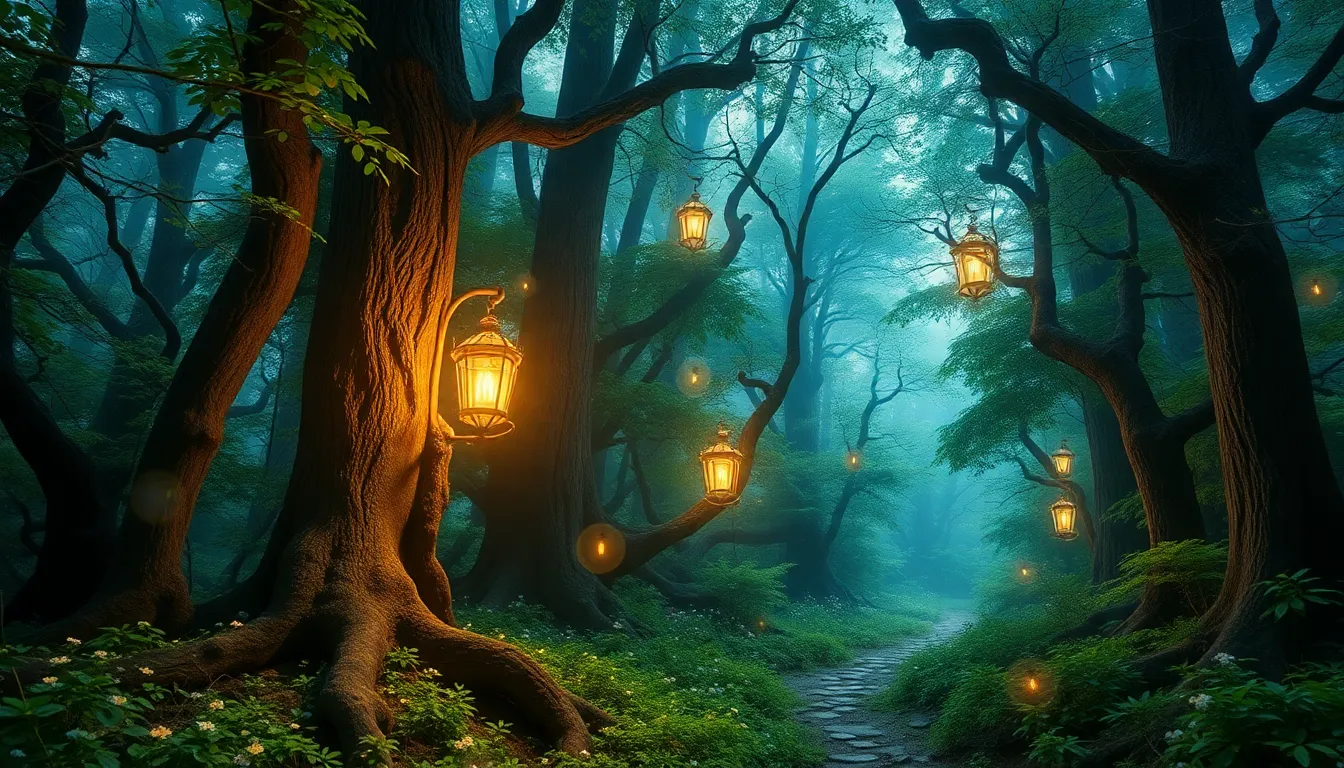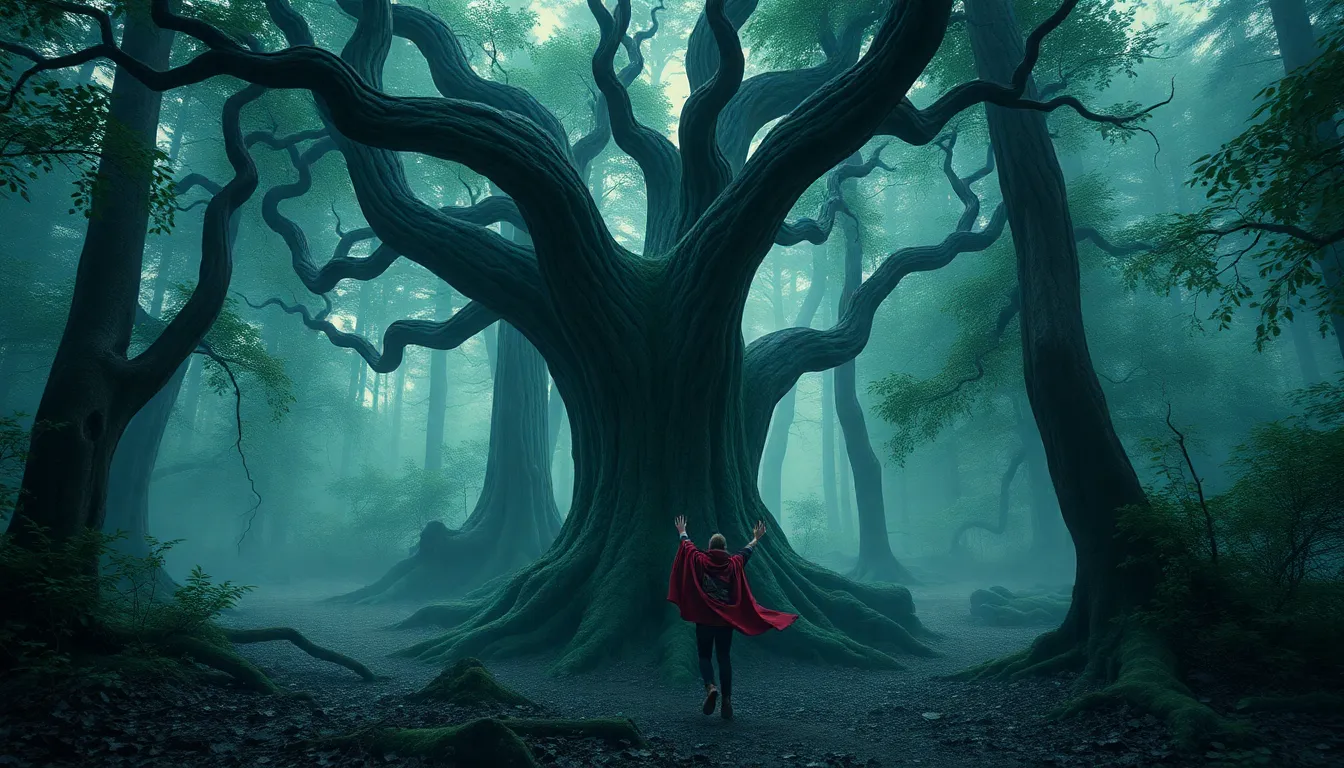The Enchanted Forest: A Tangle of Myths and Memories
I. Introduction to the Enchanted Forest
Enchanted forests have long captivated the human imagination, serving as mystical realms where the ordinary meets the extraordinary. These magical woodlands are often depicted in folklore as places of wonder, danger, and transformation, representing the deep connection between humanity and the natural world. In this article, we will explore the myths, memories, and cultural significance of enchanted forests, delving into their historical origins, symbolism, and the modern interpretations that continue to shape our understanding of these enchanted places.
II. Historical Origins of Enchanted Forests
The concept of enchanted forests dates back to ancient tales that have been passed down through generations. These stories often reflect the values, fears, and aspirations of the cultures from which they originate.
A. Ancient tales and their roots in various cultures
From the dense woods of Europe to the serene groves of Asia, enchanted forests feature prominently in the mythology of many cultures. They serve as settings for epic quests, moral lessons, and cautionary tales.
B. The role of nature in early human storytelling
Nature has always played a crucial role in storytelling. Early humans used the elements around them to communicate complex ideas and emotions, often personifying natural features as characters in their tales.
C. Transition from oral traditions to written literature
As societies evolved, these oral traditions were transcribed into written literature, preserving the enchantment of forests in stories. Works from authors like the Brothers Grimm solidified the iconic status of enchanted forests in Western storytelling.
III. The Symbolism of Enchanted Forests
Enchanted forests are rich in symbolism, often embodying themes of magic, mystery, and duality.
A. Nature as a character: themes of magic and mystery
Forests often take on characteristics of sentience in myths, acting as characters in their own right. They can be nurturing, but also treacherous, reflecting the unpredictable essence of nature.
B. The duality of beauty and danger in forest settings
The allure of enchanted forests lies in their dual nature. While they are depicted as beautiful and inviting, they also harbor dangers, symbolizing life’s complexities:
- Beauty: Lush greenery, vibrant flowers, and serene landscapes.
- Danger: Hidden creatures, dark paths, and the unknown.
C. Representation of the subconscious and inner journeys
Enchanted forests often serve as metaphors for the subconscious, where characters embark on journeys of self-discovery and transformation. The winding paths and hidden clearings represent the complexities of the human psyche.
IV. Notable Myths and Legends Associated with Enchanted Forests
Enchanted forests are the backdrop for countless myths and legends from around the world.
A. European folklore: The Brothers Grimm and their tales
The Brothers Grimm popularized many enchanting tales set in forests, such as “Hansel and Gretel” and “Little Red Riding Hood,” which explore themes of danger and moral lessons.
B. Asian myths: The significance of forests in Eastern stories
In Asian folklore, forests are often seen as sacred spaces inhabited by spirits and deities, reflecting a deep reverence for nature.
C. Indigenous narratives: Spiritual connections to nature
Indigenous cultures around the world have rich narratives that highlight the spiritual connection between people and forests, viewing them as living entities deserving of respect and protection.
V. Modern Interpretations in Literature and Media
Enchanted forests continue to inspire contemporary creators across various media.
A. Contemporary fantasy novels featuring enchanted forests
Modern fantasy literature often features enchanted forests as central settings, where characters embark on quests and confront personal challenges. Popular examples include:
- “The Chronicles of Narnia” by C.S. Lewis
- “The Hobbit” by J.R.R. Tolkien
- “The Bear and the Nightingale” by Katherine Arden
B. Film and television adaptations: From animated classics to modern blockbusters
Films like “The Wizard of Oz” and Disney’s “Frozen” depict enchanting forest settings that captivate audiences, reinforcing the magical allure of these landscapes.
C. The influence of video games in exploring forest themes
Video games such as “The Legend of Zelda” and “Ori and the Blind Forest” allow players to explore vast, enchanted woodlands, engaging them in immersive storytelling and adventure.
VI. The Enchanted Forest as a Place of Transformation
Enchanted forests often serve as catalysts for personal growth and transformation.
A. Personal growth and self-discovery through enchanted experiences
Characters who venture into enchanted forests often undergo significant transformations, learning important lessons about themselves and the world around them.
B. The journey archetype: Characters facing trials in mystical woods
This journey archetype is a common narrative thread, where characters face trials that challenge their beliefs and values, leading to personal growth.
C. Case studies of popular characters who undergo transformation
Examples include:
- Frodo Baggins from “The Lord of the Rings,” who transforms through his journey into the heart of darkness.
- Coraline from Neil Gaiman’s “Coraline,” who learns bravery and self-reliance in a parallel world.
VII. The Psychological Impact of Enchanted Forests
The presence of nature, especially forests, has a profound impact on mental health and well-being.
A. The role of nature in mental health and well-being
Numerous studies have shown that spending time in nature can reduce stress, improve mood, and enhance overall well-being.
B. Forest bathing and its therapeutic benefits
Forest bathing, or “Shinrin-yoku,” is a practice originating in Japan that encourages immersing oneself in the forest atmosphere, known to promote relaxation and healing.
C. Connection between myths and psychological archetypes
Myths surrounding enchanted forests often tap into universal psychological archetypes, resonating with our collective unconscious and providing insight into our own journeys.
VIII. The Enchanted Forest in Art and Culture
Enchanted forests have inspired artists and cultural expressions throughout history.
A. Artistic representations: Paintings, illustrations, and sculptures
Artists like Caspar David Friedrich and Gustav Klimt have captured the ethereal beauty of forests in their works, reflecting the mystical quality of these landscapes.
B. The influence of enchanted forests on music and dance
Many musical compositions and dance performances draw inspiration from the enchanting and mysterious qualities of forests, evoking emotions tied to nature.
C. Festivals and events celebrating forest folklore
Various festivals celebrate the folklore surrounding enchanted forests, bringing communities together to honor their cultural heritage and the natural world.
IX. Environmental Concerns and Conservation Efforts
The enchanting beauty of real-world forests faces numerous threats, prompting calls for conservation.
A. The real-world enchanted forests: Biodiversity and ecosystems
Real-world enchanted forests, such as those found in the Amazon or the Black Forest, are crucial ecosystems that support vast biodiversity.
B. The impact of climate change on mythical landscapes
Climate change poses a significant threat to these forests, altering their landscapes and impacting the flora and fauna that inhabit them.
C. Efforts to protect and preserve these natural wonders
Conservation efforts are underway globally to protect these vital ecosystems, emphasizing the importance of sustainable practices and community engagement.
X. Conclusion: The Enduring Legacy of Enchanted Forests
Enchanted forests continue to hold a special place in our hearts and imaginations. They serve as powerful symbols of nature, transformation, and the human experience. As we reflect on the interplay between myth and memory, it becomes clear that enchanted forests are not merely remnants of folklore; they are vital spaces that inspire creativity, foster well-being, and remind us of our deep connection to the natural world. Their legacy will endure as long as we continue to tell stories that celebrate their magic.



